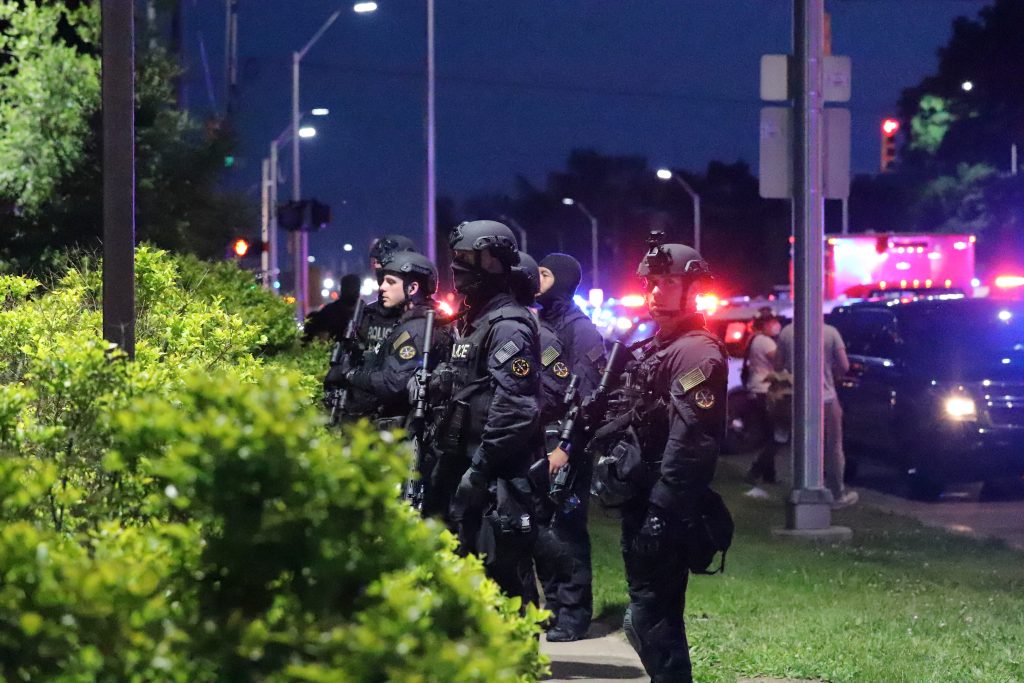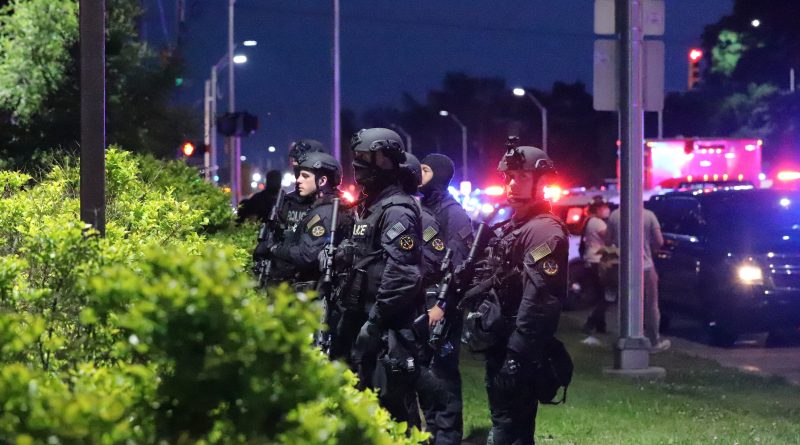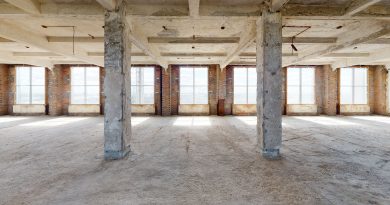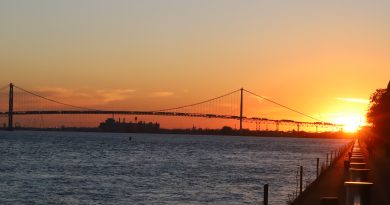No Tear Gas at Sixth Night of Protests in Detroit; Journalists Again Assaulted
Nationwide protests over the murder of George Floyd in Minneapolis by a police officer continued again for the fifth consecutive night. Donald Trump deployed several hundred military infantry in the nation’s capital, coordinating with D.C. riot police. At least one video appeared to show heavily armed private security, who refused to identify who they were other than that they worked for the Department of Justice. Most protests nationwide were peaceful, contrary to a narrative that has increasingly blamed the protesters for violence, but police violence, indeed the very violence the protests are criticizing, remains pervasive.
Last night’s March was a doozy, hitting roughly the 12-mile mark before riot police closed in on the group at Gratiot Avenue and Conner, 5.8 miles northeast of Campus Martius in downtown Detroit. Numerous protesters claimed that the police “kettled” the group, a usually-illegal technique that involves surrounding a protest and blocking their means of escape in order to make mass arrests. The technique is the subject of a massive series of lawsuits in St. Louis. Detroit Police leadership have maintained that the mass arrests– which may or may not be preceded by widespread use of chemical agents, rubber bullets, and police violence- are the only solution to protesters violating the curfew imposed by Mayor Mike Duggan. (Mike Duggan’s office deferred all questions about police brutality to the DPD).
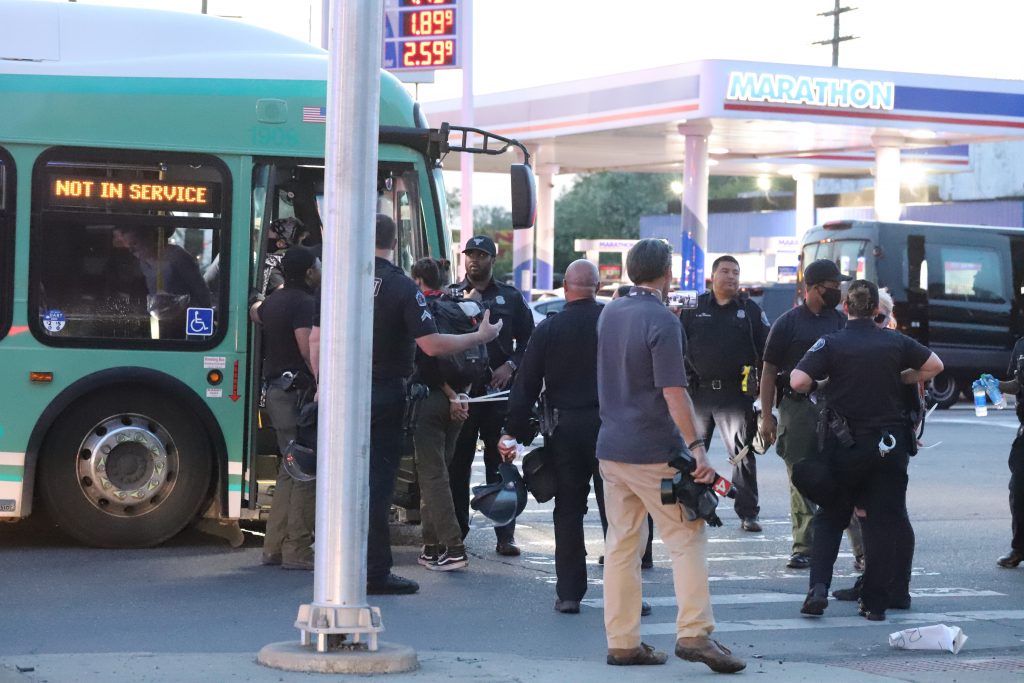
VIOLENCE AGAINST JOURNALISTS
Numerous journalists have been assaulted, sprayed with tear gas and chemical weapons, and illegally detained over the course of the protests, including Christine MacDonald (Detroit News), Steve Neavling (Metro Times), Darcie Moran (Free Press), and others. Reports of violence against media by police in other cities has drawn condemnation in New York, Washington, Minneapolis, and elsewhere. Last night, Steve Neavling was knocked to the ground and his glasses were knocked off. A non-apologetic apologetic gaggle of officers unsuccessfully tried to help him find them after the incident.
Is this what we have to do to maintain law and order? Smack around the media?
The ACLU of Michigan said in an e-mail that they do not as a matter of policy comment on pending litigation and declined to comment on whether they had received or verified any reports of brutality. But a source familiar with the matter said that litigation against the police department over a repeated pattern of brutality against journalists was not unlikely, whether or not it came from the ACLU specifically. The author– and at least one other journalist thus far- have filed complaints with the Office of the Chief Investigator, and continue to cooperate with police guidelines for journalists covering protests, which now requires procuring special media badges that change every day. At issue is not only the question of physical injuries suffered but also a question of Constitutional rights being violated.
Asked why a police officer would specifically target a journalist prominently displaying a media credential, Assistant Chief J.E. White responded: “I have no idea why he would do that.”
Today, DPD’s media liaison, in a phone call, discounted the possibility that there was any specific targeting against journalists by police officers and downplayed the idea that national rhetoric, such as that coming from the White House decrying the media as the “enemy of the people,” might be influencing officers who were inclined to rough up a reporter.
“You are our partners,” she said, “and we have a good relationship with the media. I can tell you that any incidents that have been reported will be thoroughly investigated by the Department.”
The officer did confirm that at least one officer was removed from duty pending an investigation after a Twitter video surfaced showing officers shoving a man who was leaving a protest.
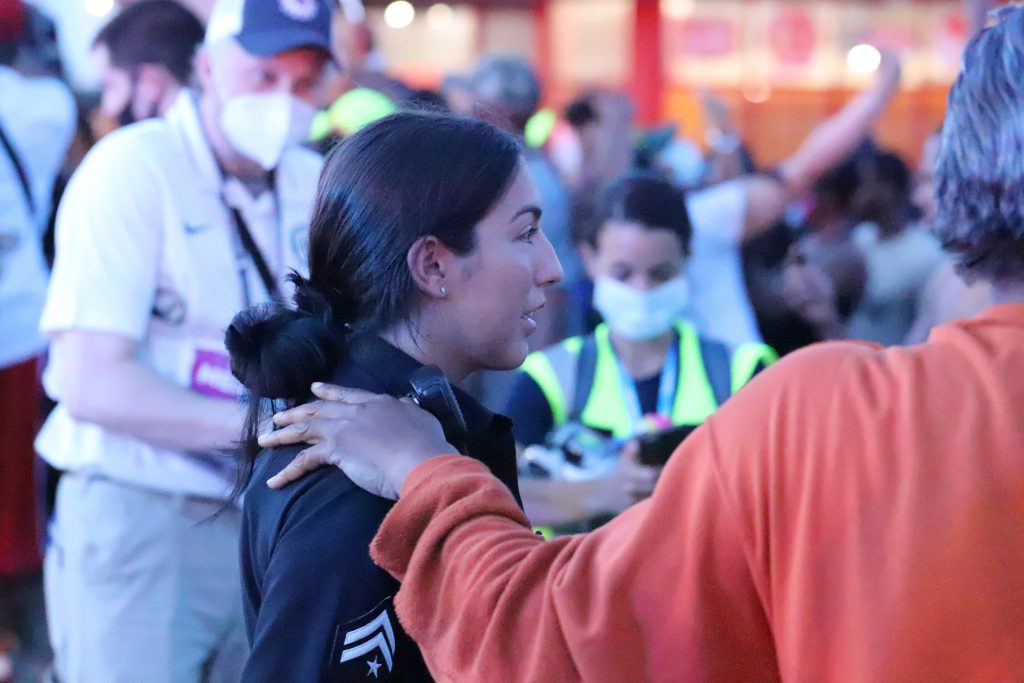
COMMUNITY CONTEXT
Amid questions of the role of white allyship, residents in Detroit were frustrated that a disruptive protest comprising many white, many non-Detroiters, had come to their neighborhood to, in their perception, stir up trouble. While most of the protesters have been entirely peaceful in spite of a small number of rabble rousers, there is a broader question here about whether white allyship is intentionally or unintentionally eclipsing voices and messaging from people of color. This is a vital question, especially in the context of a majority black city that has suffered so much disinvestment.
I caught a young woman leaving the site of the protest in a car with two friends. They had not attended and were instead spectators to the aftermath. Their take was that while the death of George Floyd was senseless and tragic murder, the problems of racial violence by police against black citizens was not a Detroit problem.
“We don’t go through nothin’ like that here in Detroit,” she said. “Like, we have our own criminals, okay. But we don’t go through our police people killing our fuckin’ black people. We don’t go through that.”
“I just feel like, if you gon’ take that somewhere, go to Ypsilanti. Go to Dearborn. Go to these places where we know that these things is happening all the time.”
I asked her what message she would want to give to white protesters who wanted to express their solidarity and outrage over the death of George Floyd or Breonna Taylor.
“That’s good. They have a right to be pissed off. But why they can’t go to, like, Warren? A lot of racism going on up there– we know that. Black people not gonna to cross [8 Mile Road].”
AFTERMATH
Most protesters were released after being detained at the Little Caesar’s Arena in a scene Metro Times likened to Chilean dictator Augusto Pinochet’s use of massive stadiums to detain dissidents in 1973. Critics noted the ironic contrast between this act, which an Olympia spokesperson said came out of a request from Chief Craig “to use the facility for safety reasons,” and recent releases on racial solidarity from the Red Wings and the Ilitch Organization.
Like the Mayor’s office, Olympia referred further questions to the DPD.
When all of the power of information flow is directed to and therefore controlled by the entity that has the guns and unrestricted immunity, where does that leave us?
